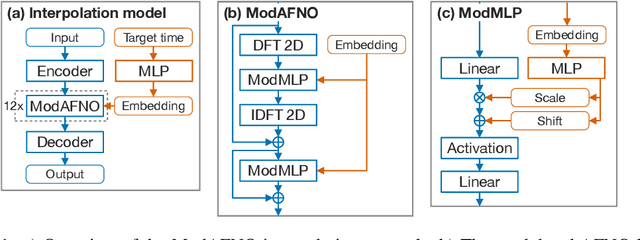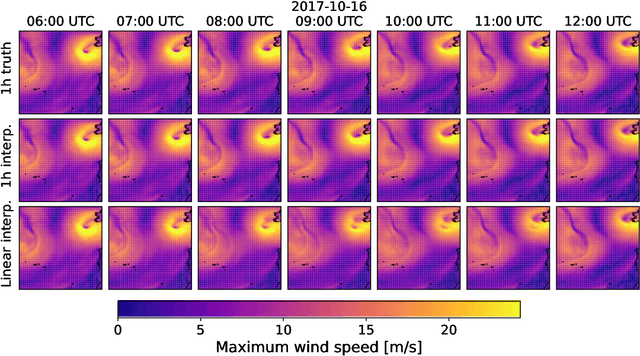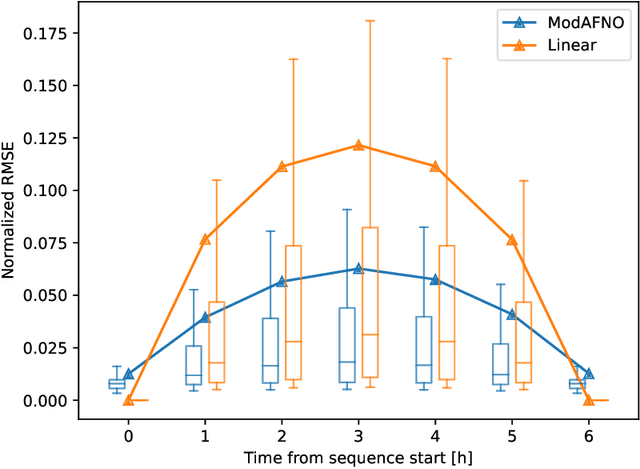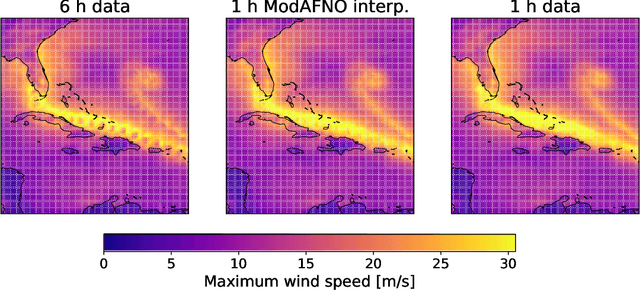Modulated Adaptive Fourier Neural Operators for Temporal Interpolation of Weather Forecasts
Paper and Code
Oct 24, 2024



Weather and climate data are often available at limited temporal resolution, either due to storage limitations, or in the case of weather forecast models based on deep learning, their inherently long time steps. The coarse temporal resolution makes it difficult to capture rapidly evolving weather events. To address this limitation, we introduce an interpolation model that reconstructs the atmospheric state between two points in time for which the state is known. The model makes use of a novel network layer that modifies the adaptive Fourier neural operator (AFNO), which has been previously used in weather prediction and other applications of machine learning to physics problems. The modulated AFNO (ModAFNO) layer takes an embedding, here computed from the interpolation target time, as an additional input and applies a learned shift-scale operation inside the AFNO layers to adapt them to the target time. Thus, one model can be used to produce all intermediate time steps. Trained to interpolate between two time steps 6 h apart, the ModAFNO-based interpolation model produces 1 h resolution intermediate time steps that are visually nearly indistinguishable from the actual corresponding 1 h resolution data. The model reduces the RMSE loss of reconstructing the intermediate steps by approximately 50% compared to linear interpolation. We also demonstrate its ability to reproduce the statistics of extreme weather events such as hurricanes and heat waves better than 6 h resolution data. The ModAFNO layer is generic and is expected to be applicable to other problems, including weather forecasting with tunable lead time.
 Add to Chrome
Add to Chrome Add to Firefox
Add to Firefox Add to Edge
Add to Edge